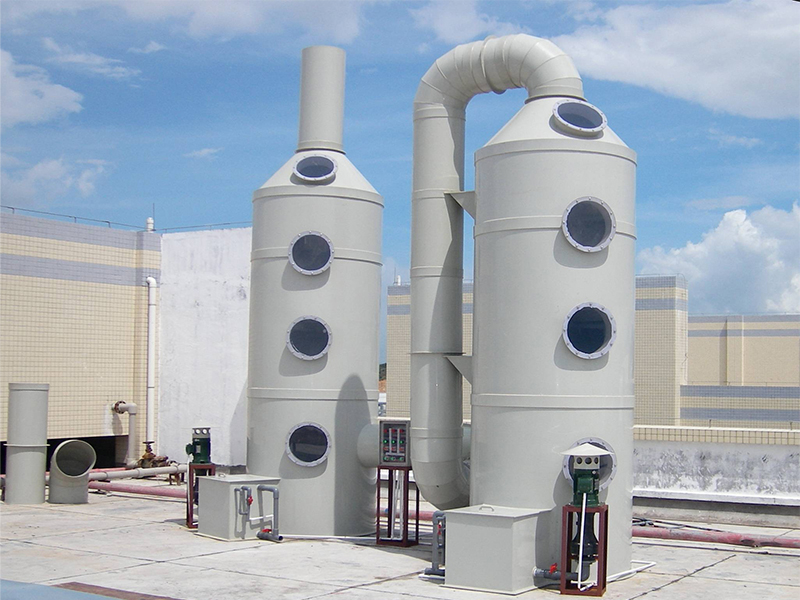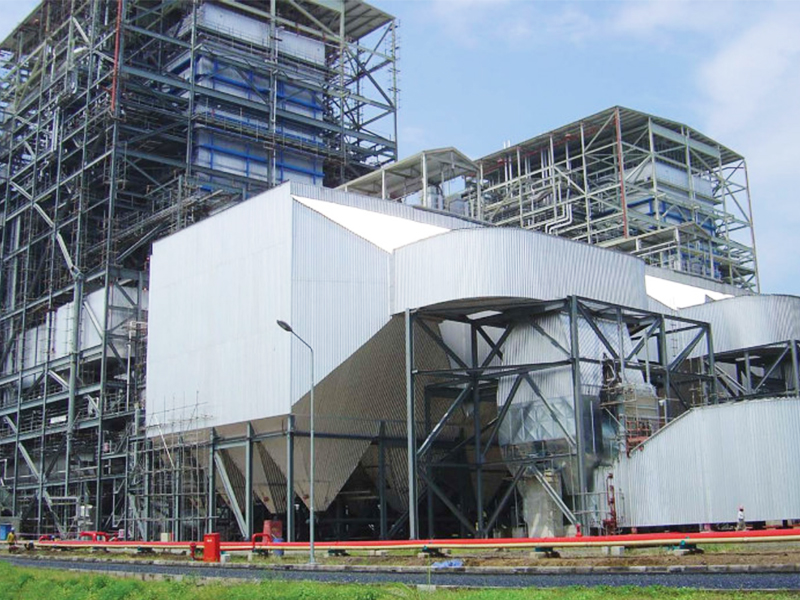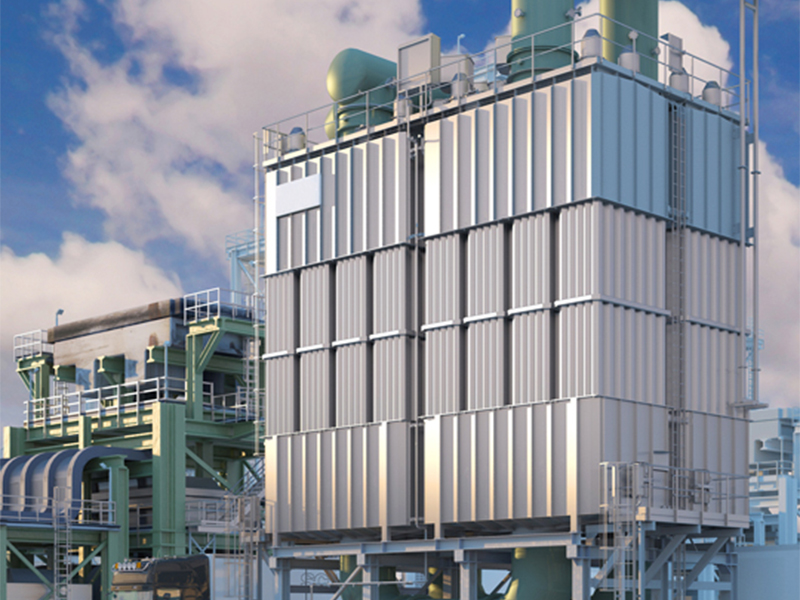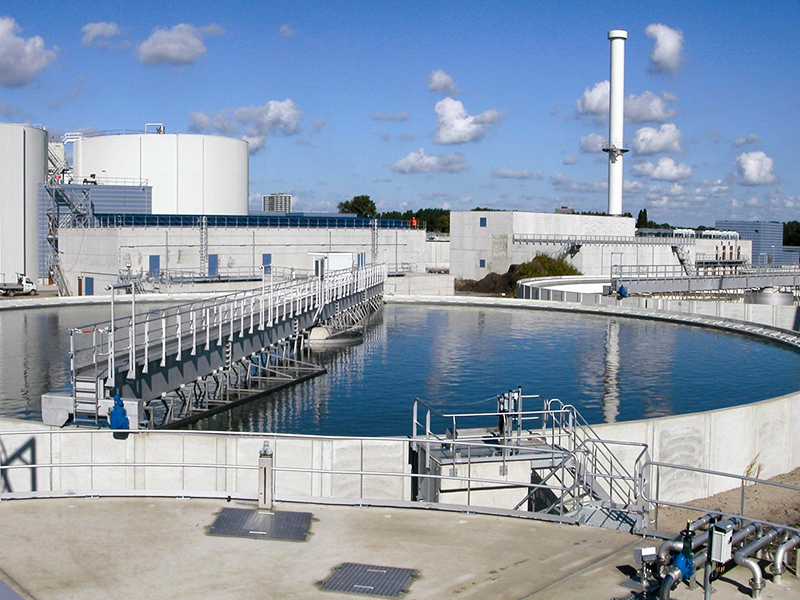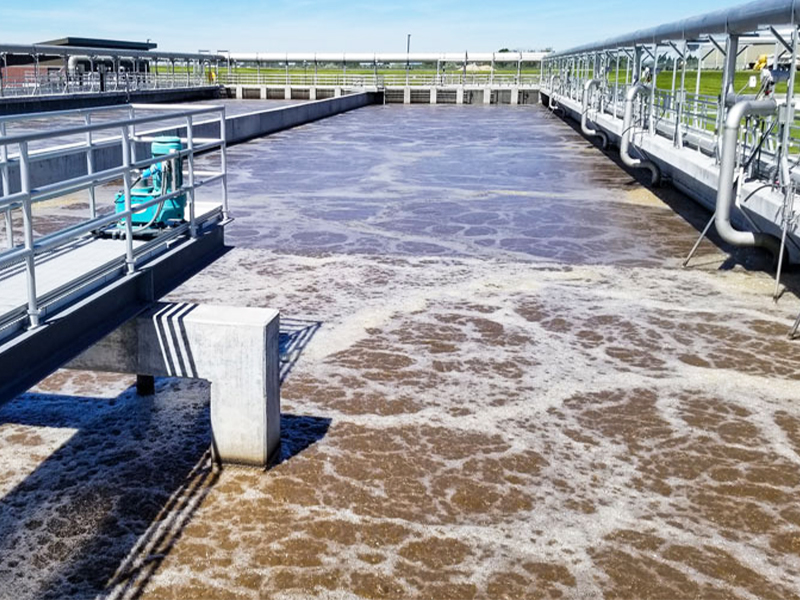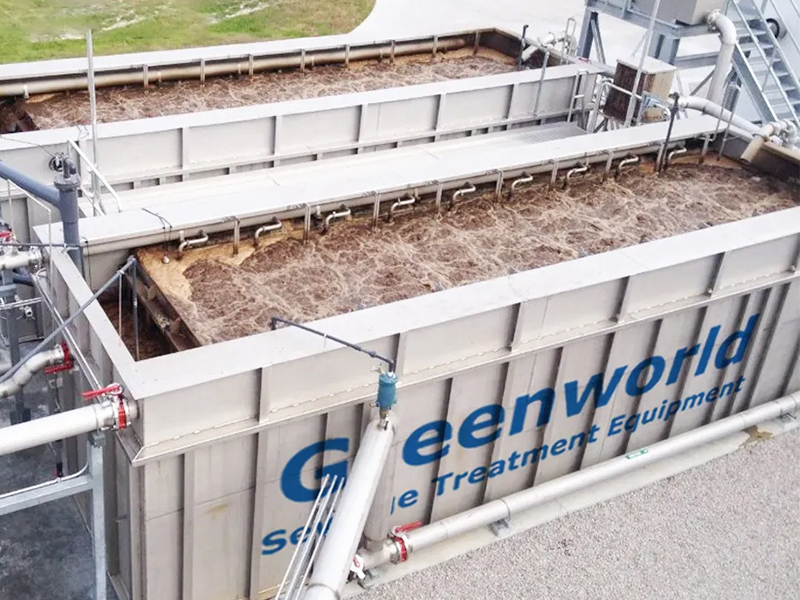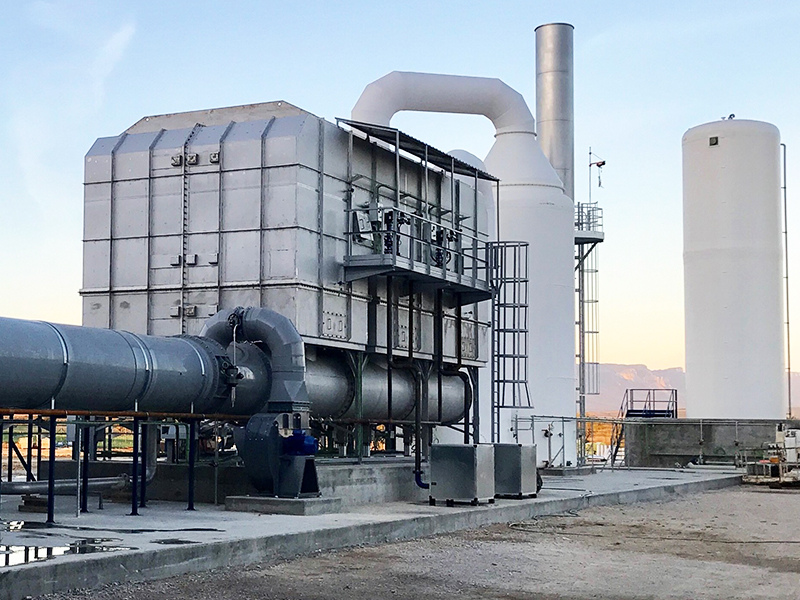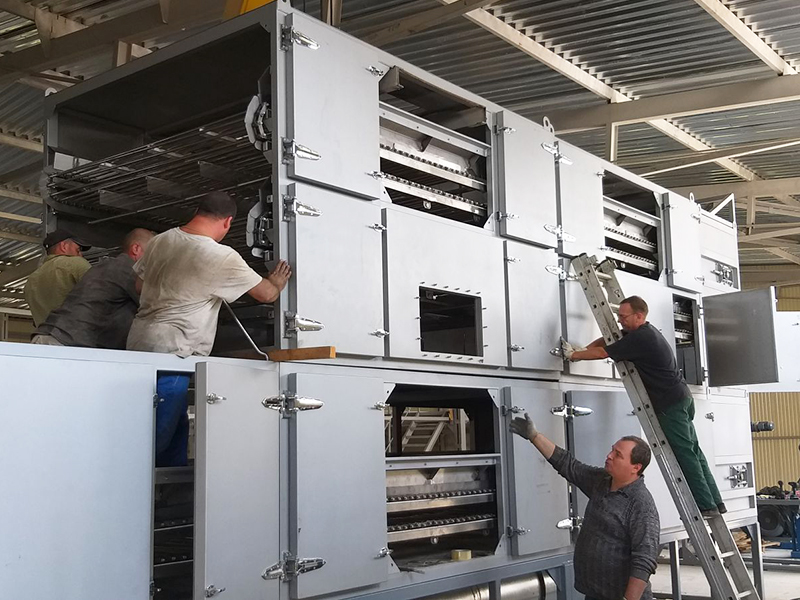Project Introduction
For large particles, small sheet materials, small cylindrical and amorphous materials, belt dryer is a more suitable dryer. Now the common is the through-flow belt dryer, the parallel flow drying method is only used in the tunnel dryer. The belt dryer introduced in this refers to the through-flow belt dryer, referred to as the belt dryer.
Composition of belt dryer:
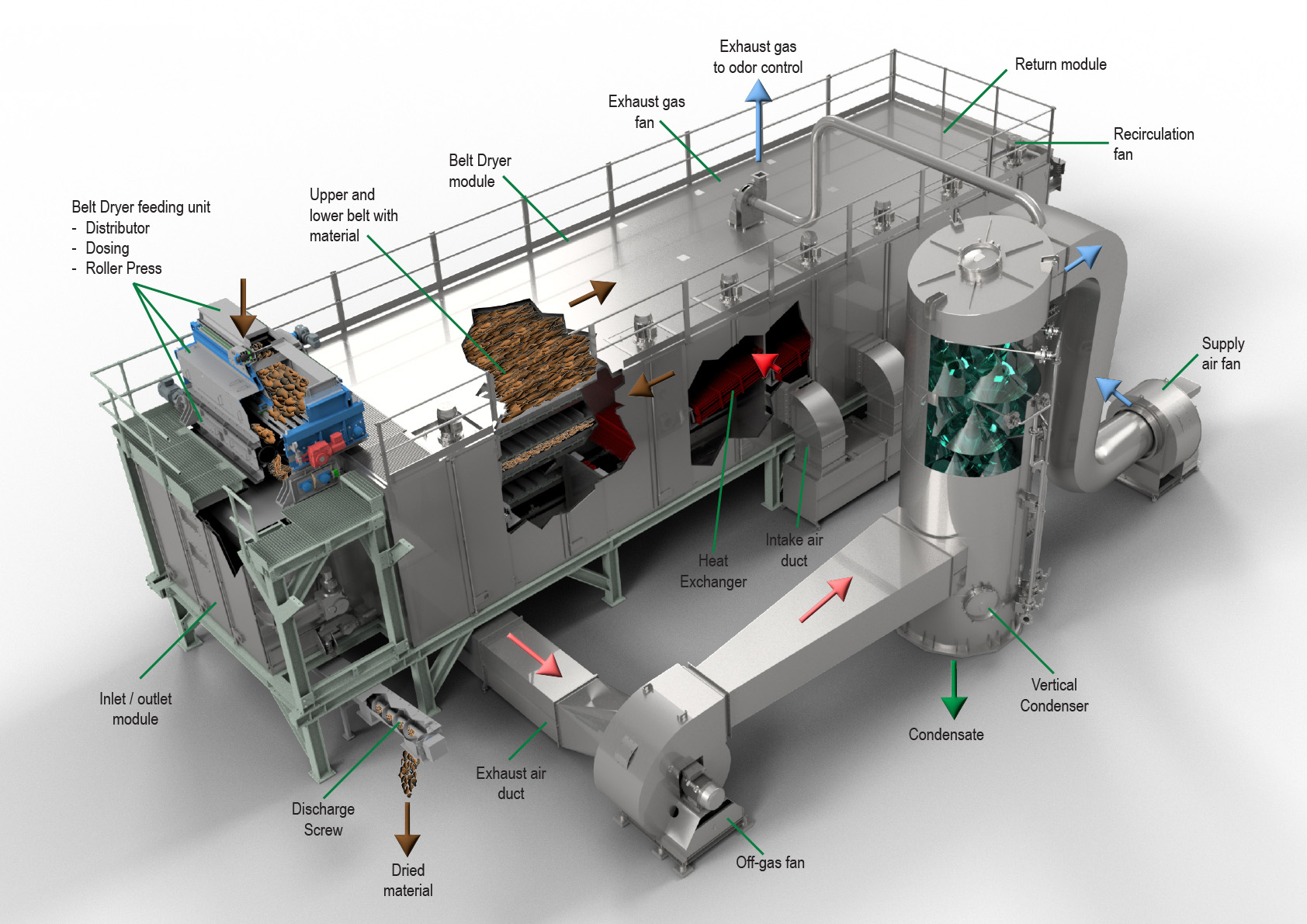
The belt dryer is composed of several independent units. Each unit consists of a box, a conveyor belt and a transmission system, a circulating fan, a heating device, a separate or common fresh air suction system and a tail gas discharge system. The number of units can be determined according to the needs, and the operating parameters of the drying medium such as air volume, temperature, humidity and exhaust circulation can be controlled independently, so as to ensure the reliability of the dryer and the optimization of operating conditions.
Features of belt dryer:
1. The operation of the belt dryer is flexible. After the wet material enters the belt dryer, the drying process is carried out in a completely sealed box, and the working conditions are better to avoid the leakage of dust.
2. When the dried material in the belt dryer moves with the conveyor belt, the relative position between the material particles is relatively fixed (which can be considered as a fixed bed), and the drying time is basically the same. The belt dryer is very suitable for some drying processes where the color of the material changes or the moisture content is required to be uniform. In addition, the vibration and impact of the material on the belt dryer is very slight, and the material particles are not easy to break, so it is also suitable for drying some materials (such as food) that are not allowed to break.
3. The belt dryer can not only dry the material, but also bake, fire or mature the material sometimes.
4. The structure of the belt dryer is not complex, easy to install, can run for a long time, when the fault occurs, it can enter the internal maintenance of the box, and the maintenance is convenient.

Applicable scope of belt dryer:
Belt dryer is the most commonly used continuous drying device, widely used in food, chemical fiber, leather, forestry, pharmaceutical and light industry, in inorganic salt and fine chemical industry also often used.
Structure and classification of belt dryer:
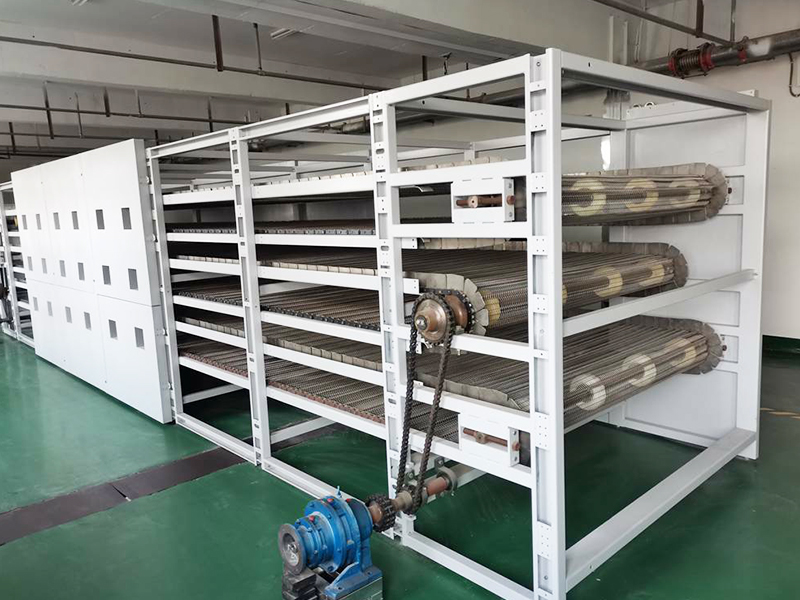
1. According to the number layers of the conveyor belt classification: it can be divided into single layer belt dryer, multi-layer belt dryer and box body series type.
2. According to the direction of hot air flow, it can be divided into downward hot air flow type, upward hot air flow type and cross composite hot air flow type.
3. According to the exhaust mode classification: can be divided into countercurrent exhaust, parallel flow exhaust and separate exhaust mode.
Design requirements of belt dryer
Conveyor belt:
1. At present, the most used conveyor belt is made of stainless steel wire mesh, mesh number of 10 ~ 14 mesh, according to the material particle size, material density and material thickness to determine. If the single layer network appears thin, two layers of network can be used together. Under the screen is supported by a roller, which is connected and fixed with a roller. The two ends of the roller are inserted into the hollow shaft of the conveyor chain and run together with the chain.
2. If the material is sticky, a layer of non-stick mesh can be attached to the stainless steel mesh.
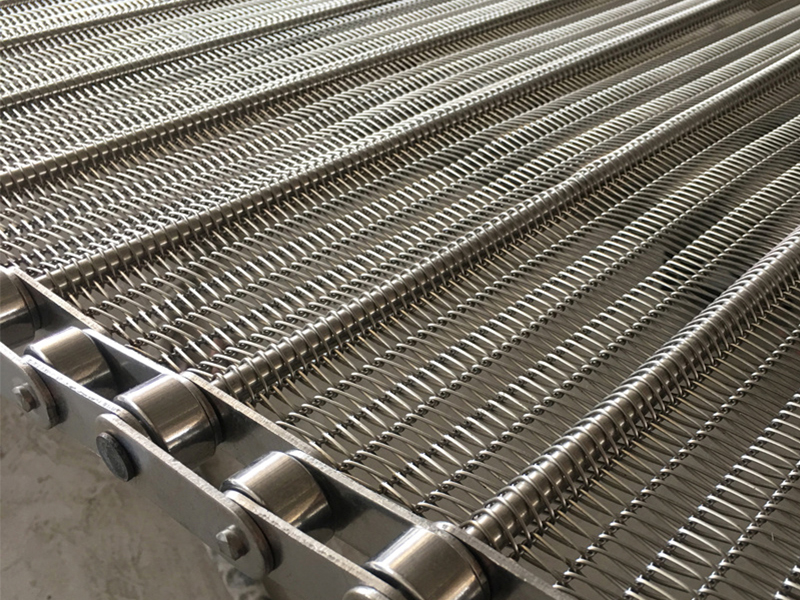

3. Perforated steel plates are connected to form a conveyor belt. The thickness of the steel plate is 1mm to 1.5mm, and the opening rate is determined by the rigidity of the steel plate after perforation. According to the information, the opening rate is 6% ~ 45%, which is too large. According to practical experience, if the thickness of steel plate is 1.2mm, the opening rate is 12% ~ 18%. Can open round hole, the aperture is about 2mm; Long holes can also be punched. The width of each perforated steel plate is equal to the chain pitch. Both ends of the perforated steel plate can be connected with the inner ear plate of the non-standard conveyor chain, so that the perforated steel plate can run with the conveyor chain.
Feeding device:
If the thickness of the conveyor belt feeding layer is uneven, it will cause short circuit of the drying medium (hot air) or uneven pressure drop, so that the thin material layer is "too dry", while the thick material layer is not dry enough, affecting the quality of the product. Therefore, the design of feeding device is very important.
1. Feeding funnel: This is the simplest feeding device, suitable for non-viscous granular, block, etc
Solid materials with good fluidity, such as fruits, pills and vegetables cut into small pieces or slices, etc. The width of the feeding mouth of the funnel is equal to the effective drying width of the conveyor belt, and the feeding mouth is equipped with a gate to adjust the feeding amount.
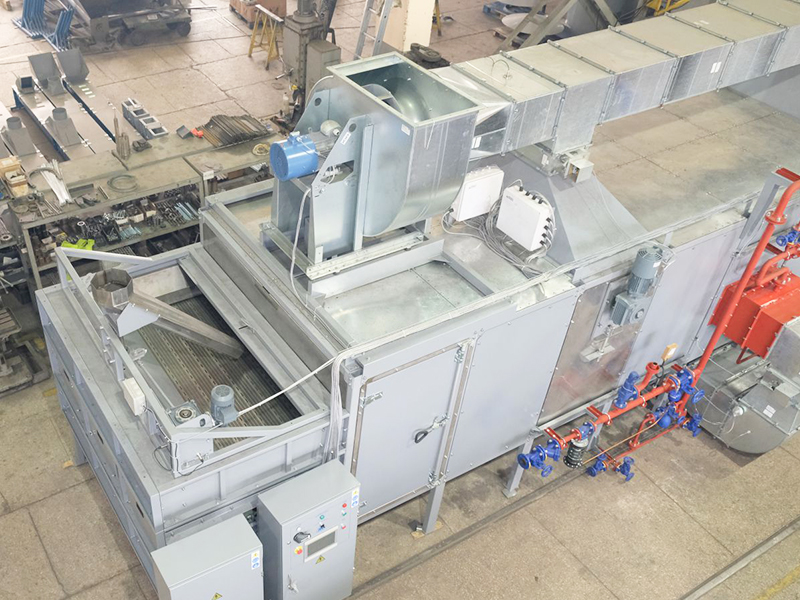
2. Feeding funnel with flat blade stirring shaft: A stirring shaft with flat blade is attached to the feeding funnel to prevent the material from remaining on the inclined wall of the funnel, which is suitable for granular materials with poor fluidity.
3. Change the above flat blade into a blade with uniform tooth shape, suitable for fibrous materials, such as wool, artificial fiber, cellulose, etc. Because of the uniform tooth blade, the fiber material can be evenly thick on the conveyor belt.
4. Drum extrusion feeding device: the feeding device is a pair of rubber-coated metal drums that can swing and rise back and forth on an arc perforated plate, and the storage hopper is fixed between the drums and swing accordingly. The storage hopper is often equipped with a stirrer to stir the material within the length of the storage hopper.
This kind of feeding device is suitable for paste material. The paste material flows into the drum through the storage hopper, and then is extruded into a strip material with a large surface area of 3 ~ 8mm in diameter, which is evenly distributed on the conveyor belt. For wet paste material or thixidation material should be preheated and dried or vacuum drum filter dehydration into paste material, and then use extrusion feeding. Titanium dioxide, China clay and calcium carbonate and other inorganic materials use this kind of feeding device.
Transmission device:
The transmission device is composed of non-standard large-pitch chain, sprocket, sprocket shaft, six-pole motor (960r/min), frequency converter, double-stage cycloidal pinwheel reducer and a set of gear or sprocket reducer.
1. Non-standard large-pitch chain: for wire mesh conveyor belt, the chain pitch is generally 76.2mm (3 inches)
Or, 101.6mm(4 inches). The chain shaft is hollow shaft, which can pass through the roller end of the supporting mesh belt; For the punching plate conveyor belt, the chain spacing is 6 ~ 8 inches, which can increase the width of the punching plate and increase the rigidity. There are ear plates on the inner side of the chain, which can fix the punching plate and the lateral baffle plate. If the hot air temperature is lower than 200℃, the chain material is Q235A; If the hot air temperature is higher than 200℃, the chain material should be considered 16Mn.
2. Chain wheel: chain wheel should be made of 45 steel, chain wheel teeth should be partially quenched to increase wear resistance, the key grooves on both ends of the same chain wheel shaft must be in the same direction. It is recommended that a pair of sprockets be superimposed together, and spot weld well, and then process the keyway together.
3. Chain wheel shaft: if the sprocket shaft is long, carbon steel pipe can be used in the middle section; The two sections are solid shaft ends, plugged or ring welded in steel pipe, made of 45 steel. The two shaft ends must be concentric, and the keyway on the two shaft ends must be on the same bus, so as to ensure that the chain on both sides does not produce front and back dislocation, and also to ensure that the net belt conveyor and hole plate conveyor will not be skewed.
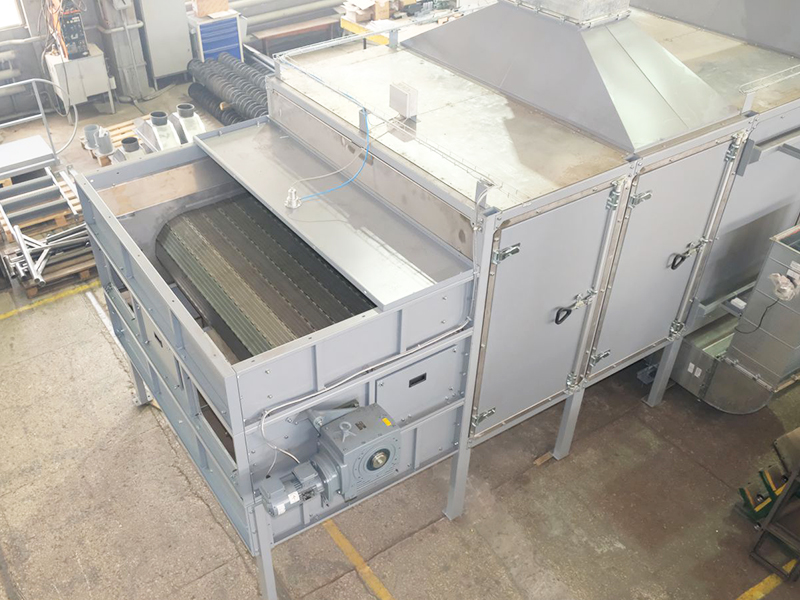
4. Six-pole common motor + frequency converter: for common motor, the frequency can be reduced to 15Hz, so that the motor output speed can reach 290r/min at the lowest.
5. Double-stage cycloidal pinwheel reducer: the reduction ratio should be 289 ~ 377, so that the minimum speed of the output end of the reducer is 1 ~ 0.77r/min.
6. A set of gear or slink wheel deceleration: its deceleration ratio is 2.5 ~ 3, so that the minimum linear speed of the conveyor belt is 0.4 ~ 0.8m/min, can ensure the drying time of the material that is not easy to dry.
Dry hot air heating device:
1.The temperature of dry hot air is below 150℃, and steam can be used as the heat source. If the steam heat exchanger is outside the drying box or above the dried material, SRZ or SRL type steam heat exchanger can be used; If the steam heat exchanger is below the dried material, it is necessary to see whether the material will be blocked from the mesh belt hole to the fin gap of the heat exchanger. If it will not be blocked, the above two types of heat exchanger can also be used. If it will be blocked, the light tube heat exchanger is often used. Please refer to the related content in Lecture 2 for the selection and calculation of heat exchanger.
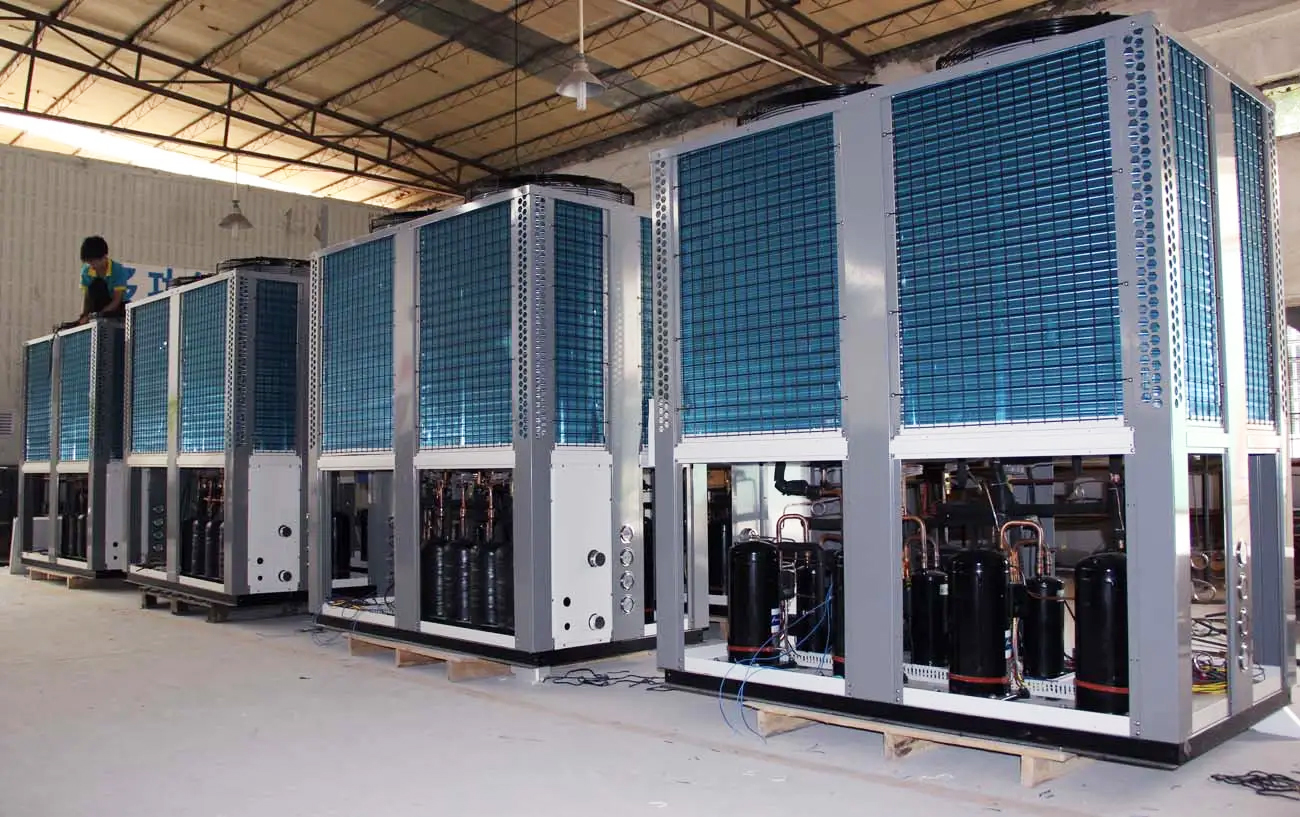
2. If the temperature of the dry hot air is required to be above 150℃, the hot blast stove should be used as the heat source. If straight into and out of a drying unit, the exhaust air temperature is high, and the exhaust air moisture content is low, then the exhaust air of this drying unit can be used as the inlet air of the next drying unit, and then discharged from the drying unit, and the two adjacent drying units form a drying combination, so as to improve the utilization rate of heat energy.
Belt dryer box:
1. Integral belt dryer box: when the water removal during drying is small and the yield is low, the integral belt dryer can be considered. The maximum length of the overall belt dryer is determined by the transportation length allowed by the means of transport, which is transported by truck. The maximum length is generally 14 ~ 15m.
2. When the length of the tape is more than 15m, it can be made on site, or made in sections and connected on site.
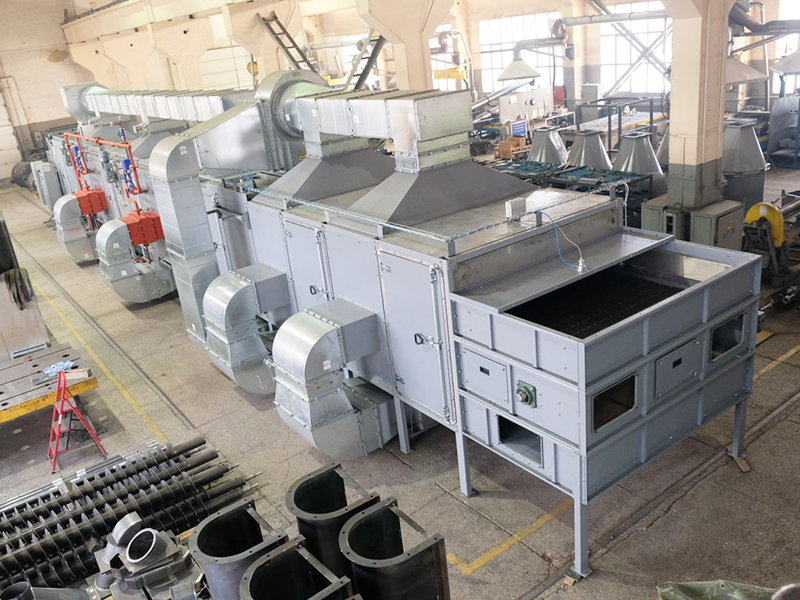
3. The insulation thickness of the dryer is 50mm, and the insulation material is rock wool felt. The frame of the belt dryer can be welded with 50×50×5 square tubes.
Calculation of belt dryer
In the calculation of the dryer, the critical moisture content of the material during the drying process is the key parameter. Critical moisture content is the average moisture content at the junction of constant speed drying stage and decreasing speed drying stage, which is an important parameter in the design of drying equipment. The constant speed drying stage is characterized by a large water evaporation rate, and is basically constant, the surface temperature of the material is also basically constant, and close to the hot air wet bulb temperature. The deceleration drying stage is characterized by a rapid decline in water evaporation rate, and is getting smaller and smaller, the material temperature gradually increases, and close to the hot air temperature. The critical moisture content is related to the water content of the material, the shape of the material (refers to the degree of bonding, particle size, specific surface area, material shape, accumulation voids, etc.), drying method (fluidized drying, fixed bed drying and spray drying, etc.) and drying conditions (hot air temperature, hot air speed, type of hot medium, etc.). The critical moisture content of the material is obtained by the test under the same drying test machine and the same drying condition as the actual drying. Other important drying parameters can be obtained in the experiment, such as drying intensity (water evaporation per unit area per unit time, kg water /m2·h), etc. For the drying test of the belt dryer, it should be tested on the small belt dryer (such as the width of 0.5m, the length of 2 ~ 3m); Or in the hot air through the oven test. The drying time obtained in the experiment should be extended appropriately in the actual design. In the absence of test conditions, it is necessary to find the qualitative analysis results from the reference literature, known drying parameters of similar materials and their own experience to carry out the design. It should be said that there is a certain risk in this case, which is minimized by amplifying the margin.

Notes on critical moisture content and belt dryer design:
(1) When granular materials are piled up together, the critical moisture content of dry base of materials is 0.08 ~ 0.12. When the colloidal material is dried in a fixed bed state, the critical moisture content of the dry base of the material is > 0.30.
(2) For the belt dryer, the surface area of the material to be dried has a great impact on the drying rate.
(3) For the belt dryer, the accumulation layer thickness and density of the material on the conveyor belt are very important. If it is not uniform, it will cause uneven drying due to uneven ventilation. In the hot air short circuit, due to excessive drying will make the product quality worse, poor ventilation will dry slowly, which will reduce the capacity of the whole drying device.
(4) Pay attention to the sealing of both sides of the conveyor belt and the inlet and outlet of the material. Due to short circuit or air leakage of hot air, drying capacity will be reduced.
(5) For the belt dryer, because the rear generally does not need dust removal equipment, is direct exhaust air, so the wet content of exhaust air can be appropriately improved. On the premise that the exhaust air temperature must be higher than the corresponding dew point temperature, the wet content of the exhaust air can be d=0.04 ~ 0.08kg water /kg dry air.
(6) The positive hot air bed speed of the conveyor belt is generally u0=0.5 ~ 1.5m/s.
Biological deodorization principle
The principle of biological deodorization is to use microorganisms to convert odorous substances into harmless compounds. During the growth process, microorganisms can convert external substances into metabolites such as carbon dioxide and water, or convert them into harmless cellular substances. This biochemical process converts pollutants into non-polluting substances. However, gas phase substances are usually difficult to undergo biochemical reactions due to their low concentration. Therefore, the biological purification process of odor needs to be completed through the filtration process of the biological deodorization tower.
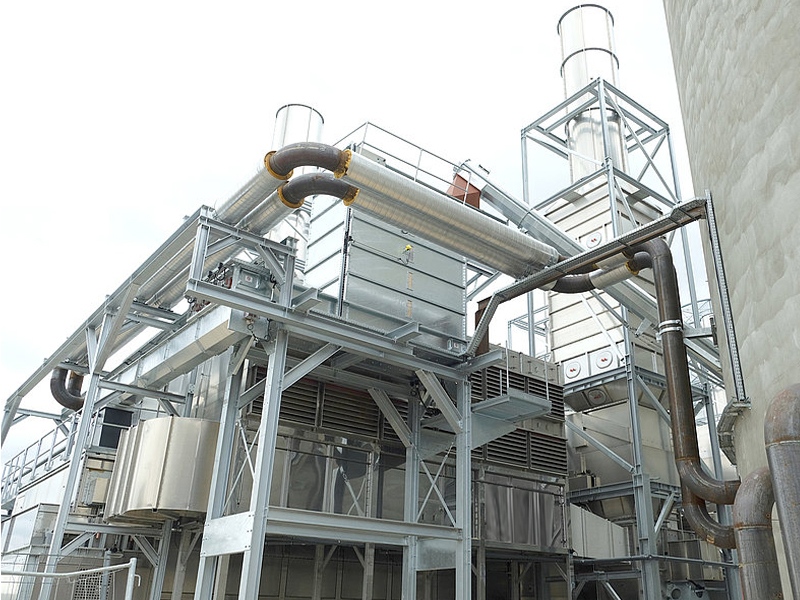
Precautions for belt dryer:
(1) The adjustment parameters of the dryer are also more, so it also has a relatively large production elasticity. In order to ensure the production capacity, in the selection of heat source, fan or exhaust fan to leave a margin.
(2) Uniform material with dryer is very important. Because in the belt dryer, the net belt and the material layer play a role in the air. If the material is not uniform, there will be a short circuit of hot air, resulting in uneven drying of the material on the net.
(3) In order to benefit from the flow performance of the hot air itself, the dynamic pressure Pd of the hot air intake duct should be less than 50Pa. Under possible conditions, let the hot air inlet box volume as large as possible, which is also conducive to wind.
(4) For each drying unit, try to achieve horizontal and vertical air volume uniformity, can use hole plate air, guide plate air and return air and other methods.
(5) After the conveyor chain is used for a long time, it will wear and elongate. There must be a mechanism to adjust the bearing position at both ends of the conveyor chain, and often adjust it to make the chain in a reasonable working state.
(6) The main driving shaft of the conveying network belt must be in front of the conveying direction, so that the bearing conveying network belt interval is always in a tense state.
In order to obtain the best drying effect and appropriate yield, it is necessary to reasonably control the water content of the material, the linear speed of the mesh belt, the air distribution volume and the air temperature and other parameters.
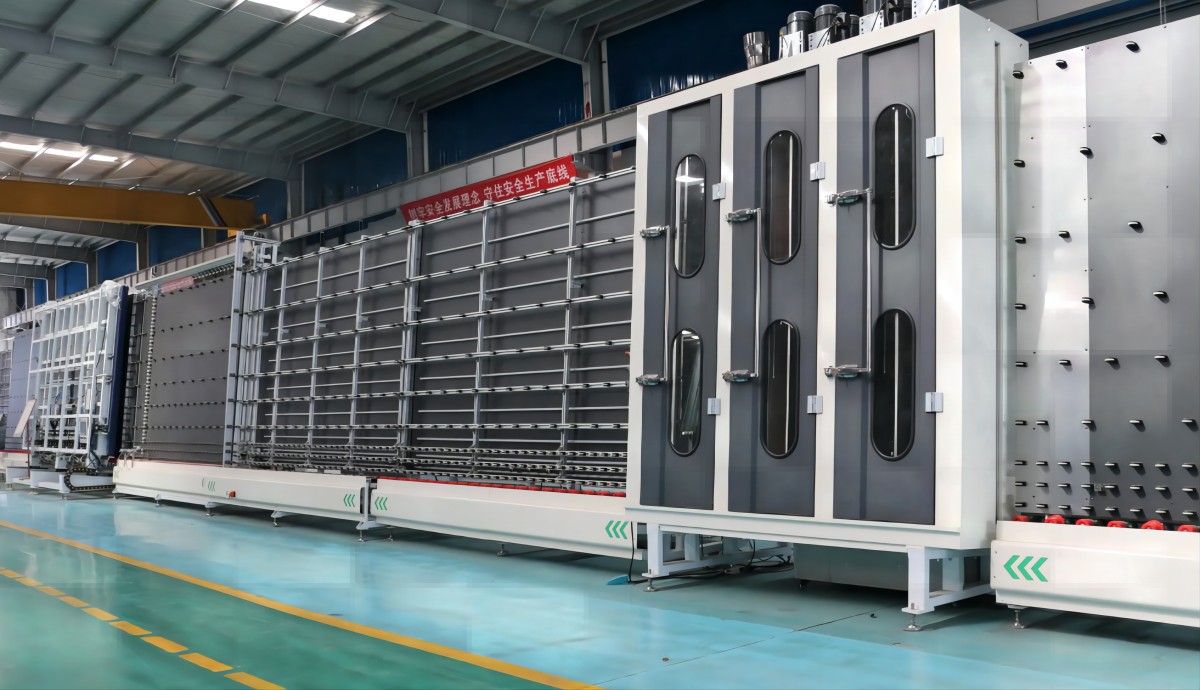
In view of the shortcomings of the traditional mesh belt dryer, we have carried out a lot of innovative transformation. Through the research on the forming and distribution of materials, the distribution and circulation of hot air through the roaster, and the recovery and utilization of the heat from the exhaust gas of the roaster, the thermal efficiency of the equipment, the uniformity and output of the product are improved. At the same time, through the optimization of details such as the replacement cycle of wearing parts, the service life and reliability of the equipment are improved.
The improved net belt dryer not only improves the drying effect significantly, but also greatly improves the output and reduces the energy consumption. In addition, the catalytic efficiency of the catalyst has been improved. This equipment is not only suitable for traditional fields, but also can be widely used in new industrial production, providing enterprises with efficient and environmentally friendly drying solutions.













